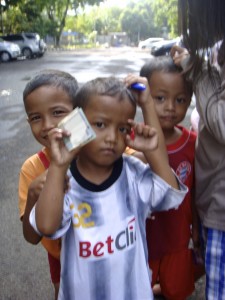Week 7: Response to Beggar’s Strike
I thought the idea of poverty and zakat was incredibly interesting. We discussed this in depth through the discussion reading “Beggar’s Strike” by Aminata Snow Fall. Though in some ways the writing itself was predictable I felt like it entered and interesting discussion of poverty and how one should handle it. I think a lot of how zakat is dealt with and the attitude surrounding poverty is determined by culture. In the context of this story set in Senegal, begging was almost like a business. According to the beggars they were needed to pray for those who give money to them. In fear of hurting the tourism industry people wanted the beggars separated from what was presented to the outsiders, becoming a point of conflict.
I just thought the whole idea behind zakat in this situation was incredibly interesting. The zakat is not really a means of helping others as it is to help oneself and to alleviate oneself of some sin almost. Growing up I looked at zakat more as a systematic way of helping the poor. I felt like all people possessed a degree of selflessness and desire to help the poor and this gave people the necessary structure to act on this intrinsic quality.
The idea of the poor praying for you when you give them money is not limited to just Senegal. Whenever I go home to Bangladesh beggars line the streets of Dhaka. They poke at your door and upon receiving money will recite a quick prayer or make a motion showing that they have prayed for you or intend on doing so. This in some ways parallels the situation in Fall’s writing. Interestingly enough many beggars are actually part of a larger operation run by gangs and do not get to keep all the money themselves. Slumdog Millionaire did a good job showing that element of begging on screen. When I visited the Istiqlal Mosque in Jakarta, a group of young kids kept following my family around begging for money. They were definitely using religion to convince us to give them money. They followed us from the mosque to the parking lot and we gave them money because of their perseverance. As soon as we gave them the money though the older kids just began counting the money.

The kids we saw at the Istiqlal Mosque in Jakarta. You can see the girl on the right counting the money, while the younger ones enjoy being photographed.
For my artistic response to this week’s reading I decided to show the hands of someone giving money to a beggar. The idea is that someone incredibly wealthy, who has every ability to donate money, chooses to only donate a little because they do not feel true moral obligation to help. Rather it is a way of checking off the boxes and being able to say I gave zakat. I thought this in some way reflected what we read about in the short story. I drew the hands in ink and used acrylic paints to create the metallic rings and coin.
